What is the best fungicide to get rid of powdery mildew? Fungicides generally come in liquid form and can be of two types based on their mode of action. Contact fungicides kill fungi immediately after application, while systemic fungicides are first absorbed by the treated plant and only then become effective. They also differ by the type of active ingredients. Organic fungicides typically contain the oils of neem, rosemary, jojoba, or the bacterium called Bacillus subtilis. Chemical solutions can be made with azoxystrobin, mancozeb, myclobutanil, benomyl, copper oxychloride, copper hydroxide, difenoconazole, and a number of other ingredients.
Today tons of fungicides aimed at eliminating harmful plant fungi and at protecting plants from terrible diseases are sold in stores all over the place.
Various factors influence the choice of the right fungicide, including the type of disease and how far it’s progressed.
Since fungicides can be harmful to humans and pets, and the efficacy depends on choosing the correct product, the best thing to do is follow some professional advice.
Our guide unites the scientists’ recommendations and experienced farmers’ tips. We have intentionally placed the review of the most effective fungicide at the end of the review because it’s the diagnosis which comes first and foremost. In order to diagnose your plant correctly you need to know as much as possible about plant diseases, and most of our guide is devoted to that matter! Getting rid of fungus takes wit!
Why are Fungi Dangerous to Plants?
Plant pathogenic fungi cause diseases in ornamental and in home grown as well as in agricultural crops. Plant diseases are known to gardeners and farmers alike.
Here is what fungi do to plants:
- They infect plants. Just like humans get infected with diseases, plants also get infected when a spore of a fungus lands on a plant tissue and invades it.
- They make the plant sick. As the fungi grows inside and on top of the plant it deprives the plant of nutrients and leaves and other plant structures start changing their shape and their color.
- They steal harvests. Because the fungus is interfering with the normal shape and functioning of the plant – you may see some leaves dying or turning yellow – the plant cannot produce the expected harvest, and the harvest will be hampered.
- They kill plants. In the worst cases, plant diseases will kill the whole plant, which means that the full crop will be lost, or ornamental trees and shrubs will need to be removed.
The spores of fungi are found in soil, air, in and on other plants and in water. They are spread with the wind, water, birds, insects, other animals, tools and implements and even people! After a spore lands on a plant tissue and invades it, the fungus starts living off the plant. They penetrate the plant tissue deeply and feed off the plant and start growing inside or on top of green plant tissue. As the growth of the fungus progresses, it depletes the plant of energy and the cells inside the leaves collapse and die, or they become completely overgrown with fungus. When this happens, the green leaf area diminishes. Plants use their green leaf area for photosynthesis, a process by which they capture sunlight and convert it to energy. When there is less green leaf area available for the plant, photosynthesis cannot take place as successfully as before and the plant starts suffering the consequences.
What Do Fungal Diseases Look Like?
Most often it is the external symptoms which hint that the plant’s been infected with a fungus. Green plants can be covered with white cottony growth and rusty-hued patches, colored spots, or rotting pieces of lumpy outgrowths. Moreover, fungi make the plants wither, become deformed, dry and they can get covered with tumors and cease to bear fruit. In case of lawn and ground grass, fungi may also cause bald spots in the lawn, as the plants die off from the fungal infection.
Various types of symptoms are caused by dozens of different types of fungi. Here is a list of some of the common diseases found on plants
- Powdery mildew. This is a widespread and common disease of plants. It attacks many different kinds of ornamental and agricultural crops and is a well-known nuisance particularly in vineyards. This disease is fairly easy to recognize since it causes white cottony growth of the fungus on the surface of leaves, flowers, fruits and other parts of the plant. This fungus thrives under moist and humid conditions and can cause serious trouble in greenhouses where it is generally moist and warm. Plants that may experience powdery mildew infection include legumes, onions, strawberries, flowers, lawns, and ornamental flowers.
- Snow mold is a disease of lawns that appears in cold weather. It affects cool season grasses. It usually appears in early spring after the snow has melted. Circular patches of dead lawn of a few inches up to a few feet become apparent as the snow melts away. The lawn in the dead area appear crusty and the dead patches may have a pink or grey discoloration, depending on the fungus that caused the disease.
- Root rot. Root rot is a condition that is found mostly in poorly drained soils. As the name indicates, a fungal infection causes the root of the plant to rot. This disease is caused by a variety of fungi on many different crops. This decaying disease will cut the life of trees and plants short, and causes poor growth, wilting of leaves, the early drop of leaves and fruit, dieback of the branches and ultimately death.
- Fungal leaf spots is a collective name for plant diseases which cause spots on leaves of plants. The leaf spots can appear in different colors, sizes and shapes depending on the plant affected and the causal organism. These leaf spot diseases may appear on a number of ornamental plants and also on various agricultural and vegetable crops. Spots are most often brown, tan or black in color. As time goes by the spots may combine and form large blotches on the leaves. The affected leaves may turn yellow and drop prematurely.
What Is the Difference between Various Fungicides?
Fungicides are classified depending on their mode of action. Here’s what it looks like.
- Protective fungicides are fungicides that are applied to protect the plants from potential infection. This means the plants are healthy when the fungicide is applied, and the application is done in order to prevent potential infection. This is typically done when a certain plant disease is known to attack plants at a certain time of the year, and the correct timing of the fungicide will then prevent that fungus from attacking the plants. Like with humans, prevention is better than cure, and generally, it works well when fungicides are applied preventatively.
- Treatment fungicides that are typically applied after the first symptoms of the plant disease were noticed, and it is used to eradicate the fungus from the plant. Because the plant is already infected, it is sometimes more difficult to eliminate diseases with treatment fungicides, particularly when the disease symptoms are in advanced stages.
- Contact fungicides are fungicides which are only active on the surfaces they get into contact with, so all leaves need to be thoroughly covered with this kind of fungicide in order to get the benefit from the application of the fungicide. Contact fungicides are often used as preventative fungicides.
- Systemic fungicides are a group of fungicides that enter the tissues of the plant. This means that the fungicide moves to the inside the tissues of the plant and it does not only remain active on the surfaces where it was applied. Because of this action, it is seen as a highly effective type of fungicide. Systemic fungicides are often used as treatment fungicides.
What do all of the fungicides do to fungi? Some of them stop fungal growth and reproduction, others block enzymes and cellular respiration, and others do not let fungi synthesize proteins and lipids for cellular membranes.
3 Fungicide Purchase Tips
- First and foremost, diagnose the disease correctly. Like with any other problem, if you don’t accurately know what the problem is, you won’t be able to manage it. It is important to correctly identify the causal organism of the disease that you are trying to manage with fungicide. Plant diseases are identified by their visual appearance. Search for sources of plant disease identification online and compare the visual symptoms you see with that of the diseased plant that you are trying to treat. If you are having difficulty it is best to ask for help with the disease identification at your local nursery.
- Read the label to see if the fungicide is suitable for use in the home environment. Fungicides can be toxic and should be used with care in the vicinity of animals. Fish are very sensitive to fungicides and one must be careful when spraying fungicide on a lawn in the vicinity of a pond.
- Consider the mixing instructions. Fungicides will have different requirements in terms of how the product should be mixed and applied. Some fungicides require small volumes of fungicide for the preparation of large volumes of solution. Be sure that the fungicide you buy will be easy to prepare in the needed volume and that you have a spray applicator at hand (for small indoor plants a spray bottle will be sufficient).
5 Fungicide Use Tips
As a rule, most fungicides, even those that are sold as organic fungicides, may be toxic to humans and animals. Here are 9 tips for the use of fungicides in the home environment.
- Always follow the safety rules in the manual. Wear protective gloves and eye goggles when spraying the fungicide. Most often fungicides can irritate skin and mucous membranes. So even when applying fungicide to pot plants, it is better to put them outside or on the balcony while treating them.
- Always prepare the mixture according to the dosage instructions. If fungicide solutions are too concentrated, they will burn the plant surfaces and cause even more damage to the plant. If the solution is too diluted, it will not be effective in treating the diseased plant. Follow the mixing instructions carefully in order to be sure that you will get the highest benefit from the product. Never touch the concentrated fungicide with bare hands, since it may harm your skin – especially if you have sensitive skin.
- Keep a treatment schedule. Most often it is recommended that the fungicide treatment is repeated once every 15-30 days. Each product has its own treatment rules which are stated on the label. Keep to the spray intervals and re-apply fungicide to the plants if the problem persists.
- Don’t poison your harvest. All fungicides will have a withholding period after the last application. This means that the produce cannot be consumed within a certain number of days after the last fungicide application. If your crop will be ripe soon, it is better to cut your losses and get rid of the diseased fruits and leave the other to ripen so that you can still consume them.
- Watch out for the weather. Be careful not to apply fungicide just before or after rain. Applying the fungicide just before it rains means that the product might be off before it had a chance to work and if you apply after rain, the wetness on the plants will dilute the product. In very hot weather, the product may evaporate from the plant surfaces. So be sure that the weather before or after application of fungicide will support the optimal working of the product.
Powdery Mildew Treatment Fungicides
Powdery mildew spores are mainly transmitted through the air. The fungus loves damp and humid weather, and plants to which high rate nitrogen was applied are very likely to get this disease.
It is important to apply fungicide to your plants as soon as this disease is noticed, because when the disease progresses it may be very difficult to get the upper hand.
At first, if you are trying to protect the plant against powdery mildew you can use a baking soda solution. The recipe can be found here. If the plant has a more serious infection of powdery mildew, a fungicide will be required to treat the plant.
As for specific products against powdery mildew, we recommend the following product range:
- Systemic fungicides: “Spectracide Immunox”®, “Ferti-lome F-Stop Granular Fungicide”, “Green Light Fung-Away Systemic Granules”.
- Water-based systemic fungicides: “Ferti-lome Liquid Systemic Fungicide”, “Bayer BioAdvanced Fungus Control”.
- Protective fungicides: “BONIDE® Liquid Copper Fungicide Spray or “BONIDE® Copper Fungicide Dust”.
- Protective fungicides acting on contact: “Fertilome 32 Oz F Stop Lawn And Garden Fungicide”, “Ferti-Lome Broad Spectrum Landscape And Garden Fungicide Vpg”, “Fung-Onil Multi-Purpose Fungicide Concentrate”.
Snow Mold Treatment Fungicides
Problems with snow mold only become apparent after the snow starts melting in the spring. It cannot be treated after the symptoms were seen, so a preventative approach is best. Fungicides need to be applied to the lawn before winter time, to be sure that when spring comes the dead patches of the lawn will not be seen again.
There are quite a few preventive fungicides against this problem.
You can find loads of useful information in the “A fresh look at fungicides for snow mold control“ study.
Best Ready-to-Use Fungicides
The experts approve of dozens of different fungicides, and it is easy to drown in the long list of names. That’s why we decided to help you and picked the most effective products that can be purchased online.
Bonide 811 Copper 4E Fungicide 16oz (473ML)
This is a classic copper-based fungicide suitable for flowers, fruits and vegetables. It treats powdery mildew, black spots and early blight. It is to be mixed with water in the proportions outlined on the package and to be sprayed. The customers claim that one spraying session per month is enough, but the product should be used more often if it rains often or if the plants are frequently watered.
Start using it early, even before any signs of disease appear and continue to spray it on every week. Rotate your crop so that you aren’t planting in the spots where you had blight last year, it will remain in the soil from year to year.
There are a few mentions of the effectiveness of the product against lawn fungi. Still, around 65% of the customers consider this product useful.
Price: Check the current price
BONIDE PRODUCTS 775 Ready-to-Use Copper Fungicide, 32-Ounce
This is a similar product by the same manufacturer. This one isn’t to be dissolved in the water, as it is sold as a ready-to-use spray. The fungicide contains copper octanoate, which is a copper salt combined with a naturally occurring fatty acid. The concentration level of the chemical is aimed at protecting the greenery from chemical burns.
The manufacturer insists on spraying the leaves abundantly. Customers don’t advise spraying it before the rain, as its complete absorption takes 24 to 48 hours. Next time you’ll have to spray it after 2-4 weeks. About 80% of users were satisfied with the operation of the chemical.
Price: Check the current price
Spectracide 51000 Immunox Multi-Purpose Fungicide, 16-Ounce Concentrate
This is a versatile fungicide that is highly rated by the users. It is suitable for most garden plants and lawns. It is especially highly rated by the fans of roses. Here is a list of diseases against which Immunox acts: black spot, blight, brown patch, copper spot, crown rot, dollar spot, leaf smut, leaf spot, melting out, necrotic ring spot, powdery mildew, red thread, rust, scab, spring dead spot, and summer patch.
It is protective fungicide which is best suited for the prevention of diseases and protection of plants against fungal attacks. This artificial chemical is not washed away by the rain and remains on the leaves for two weeks. Depending on the purpose of application (treatment, prevention, protection), the manufacturers recommend using three methods of applying the product: with pump-up Sprayer, dial-style hose-end sprayer and plus water-style sprayer concentrate.
Judging by the reviews, one bottle is enough for treating 500 square feet. Customers write that it works best with delicate plants and small leaves. Many reviews are devoted to successful lawn disease control.
Price: Check the current price
Bayer Advanced 708480 Serenade Garden Disease Control Concentrate, 32-Ounce
Bayer is a renowned manufacturer, and the quality of its products is unlikely to be questionable. This systemic organic fungicide rated highly and not only prevents but also treats the diseases. It controls black spot, powdery mildew, rust, gray mold, late blight, and scab.
A single bottle is diluted in 32 gallons of water. The mixture can be applied to both leaves and fruits. In the comments section, we were able to find contradictory feedback regarding the necessity of repeat application. Some customers claim that they were able to solve the problem after a single treatment, while others insist on compulsory repetition of the procedure after 1-2 weeks. Perhaps, everything depends on the type of fungus and the extent of plant contamination. Fortunately, the fungicide is harmless for worms and useful insects.
Price: Check the current price
Daconil® Fungicide Concentrate 16 oz.
This is an expert-proven Chlorothalonil-based product. It is perfectly suitable for powdery mildew treatment. This product was manufactured by Syngenta AG, a Swiss concern which is one of the leaders in the production of crop protection products and seeds. A single bottle is enough for 64 gallons of liquid to be sprayed. The product is considered to be protective fungicide acting on contact and of a wide range of action. However, as it can result in phytotoxicity, it’s not recommended for pittosporum or schefflera.
Price: Check the current price
Scotts Lawn Fungus Control, 5,000-sq ft, 6.75 Pounds
This is a product is devised especially for lawn disease prevention. A 2.3% Thiophanate-methyl is the active ingredient here. Experienced users recommend using the product in the spring, otherwise, it may be too late, as Scotts Lawn won’t be able to remove the fungus. A single bag is enough for 4-5 thousand sq. ft.
Price: Check the current price
Ferti-Lome Liquid Systemic Fungicide
This is a 16-ounce bottle of a concentrated insecticide intended for the application to roses, ornamentals, trees, shrubbery, and lawns. The solution is based on Propiconazole, an active ingredient which is particularly known for its strong anti-feeding properties against carpet beetles.
You will need this product to deal with such fungal diseases as powdery mildew, brown patch, red thread, and some other fungal infections. One product will be enough approximately for 1,000 square feet of the infested area.
Customers suggest that in order to treat 250 square feet of the lawn, you should take 4 ounces of concentrate and mix it to a gallon of water. A pump spray bottle can be used to apply the mixture. Those who have tried this product say that the effect will be noticeable within a week.
Price: Check the current price
Potassium Bicarbonate, a Traditional Homemade Fungicide
Potassium bicarbonate is an organic chemical compound (KHCO3) looking like white powder widely used in various industries: medicine, sport, cooking, and even agriculture. This protective fungicide is a real salvation for the plants growing in acidic soils as it:
- Is low on toxins;
- Protects the veggies (pumpkins in particular) and decorative plants from powdery mildew;
- Inhibits the breeding of harmful fungi and bacteria.
Why is it often used as a replacement of baking soda (NaHCO3) for treating the plants? Based on its chemical composition, it seems that the difference between them is almost non-existent and their chemical properties are similar. But this is only a first impression.
It is known that when in contact with the ground, both baking soda and potassium bicarbonate eventually settle therein as chlorine salts which are useful for plant nutrition and growth, but an excess amount of which can cause substantial damage (sodium soda can be especially harmful). That’s why you cannot use these fungicides haphazardly! Treating the plants with them is possible only in certain seasons, spring or fall, depending on the soil type. You can use any of them, but potassium bicarbonate is considered more effective than baking soda. Studies conducted by American scientists from the NCBI show that “the applications of potassium bicarbonate (as Armicarb) are effective in reducing the incidence and severity of American powdery mildew in gooseberry”. According to the experiment carried out, the rate of plant infection decreased from 90 to 10% given constant spraying.
Unlike potassium bicarbonate, baking soda doesn’t eliminate powdery mildew on plants, but only prevents its spreading. This fact was noted multiple times by the gardeners using it as a fungicide and comparing its action with that of potassium bicarbonate. In spite of the fact that soda has been used as a fungicide for over 80 years, Purdue University specialists have also found out that “baking soda can be effective against plant diseases when used with oil, its sodium component can build up and become toxic to plants”
That’s why we believe that the choice between potassium bicarbonate vs baking soda is quite obvious.
Here’s a popular fungicide recipe based on potassium bicarbonate:
“Mix 4 teaspoons (about 1 rounded tablespoon) of potassium bicarbonate with one gallon of water. Spray lightly on foliage of plants afflicted with black spot, powdery mildew, brown patch and other fungal diseases. Potassium bicarbonate is a good substitute for baking soda. There are commercial EPAs registered as well as generic products available”.
The bicarbonate itself can be bought at a moderate price of Check the current price per 1 Lb.

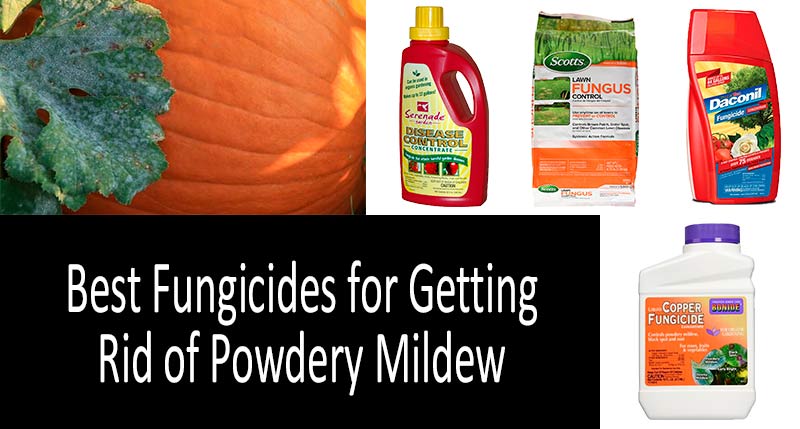
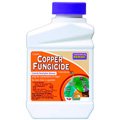
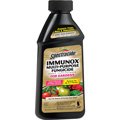

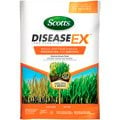










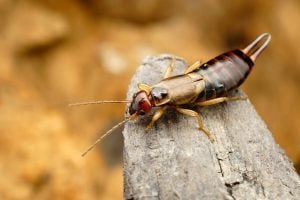

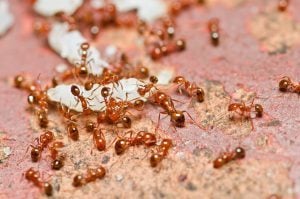
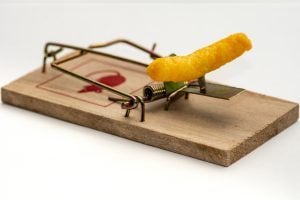
6 thoughts on “The Best Fungicides for Getting Rid of Powdery Mildew, Snow Mold, Grass and Lawn Fungi”
Hey !! Thank you for this very helpful info. I am in zone 7 , it has rained almost everyday this summer . If I didn’t have a fungicide, I’d have ZERO success with my gardens ! I have been using spectracide. I have read that it is a good idea to switch with diff fungicide occasionally to keep them working . So I googled about different fungicides , and I’m searching to decide which one I should use occasionally in place of spectracide. I try to be very very very careful and aware on the environment. But it’s truly impossible to grow anything without one of these treatments in my area. The humidity is intense. Even with good garden hygeine. Before I started growing plants, our yard still was filled with blights towards the end of summer. So I do believe in this case, it is best to help lesson the amount of fungal disease with a fungicide. I know many people will disagree and are against the use of the non organic types.. which is perfectly fine I just wish they didn’t judge so harshly.
Anyway thank you all for this !!
I am actually looking for a powder fungicide that I can use on dahlia and begonia tubers. thanks
I once encountered a fungus in plants. and it was very unpleasant!!! I had a gardener help me get rid of this stuff. And we have been waiting for the result for a long time. Be careful. And good luck with the fungus
At home, one corner constantly heats up when it rains! There, this fungus constantly breeds, we do not even know what to do with it! I understand that the fungicide will cope with this problem? And which mark better to take?
I have what I think is quince rust on a Eastern Red Cedar tree about 40 feet tall that is about 20 feet from a common cedar tree that is dyeing from something similar in appearance to quince rust ,the fungus is mostly on the lower branches of the Eastern Red but is on most of the common cedar. I need your help in getting the best fungicide for treating the Eastern Red, I’m going to cut down the common cedar and remove it, it seems to me that a systemic would be a good choice. My neighbor had a large common cedar tree dye and it took about 3 years. I live in North East Arkansas, Thank you, Bill
Michael Potter, Ph. D. In biology, is a consultant and author for StopPestInfo.com. He is a scientists obsessed with the idea to save the world from pets. — Think there’s a typo